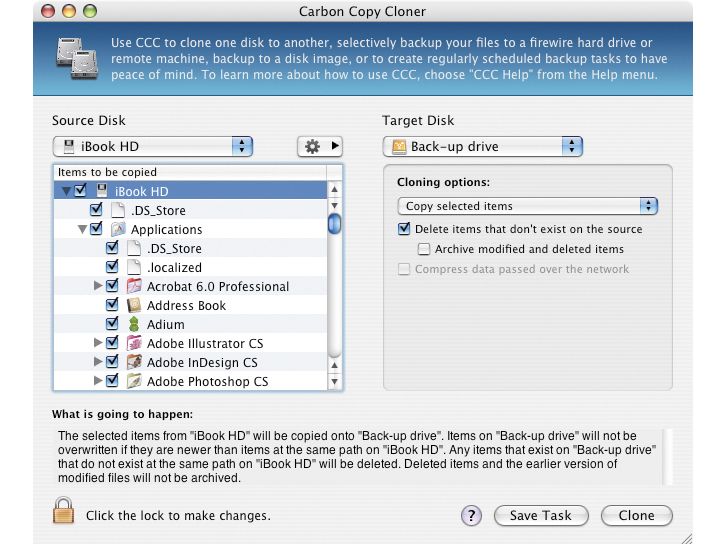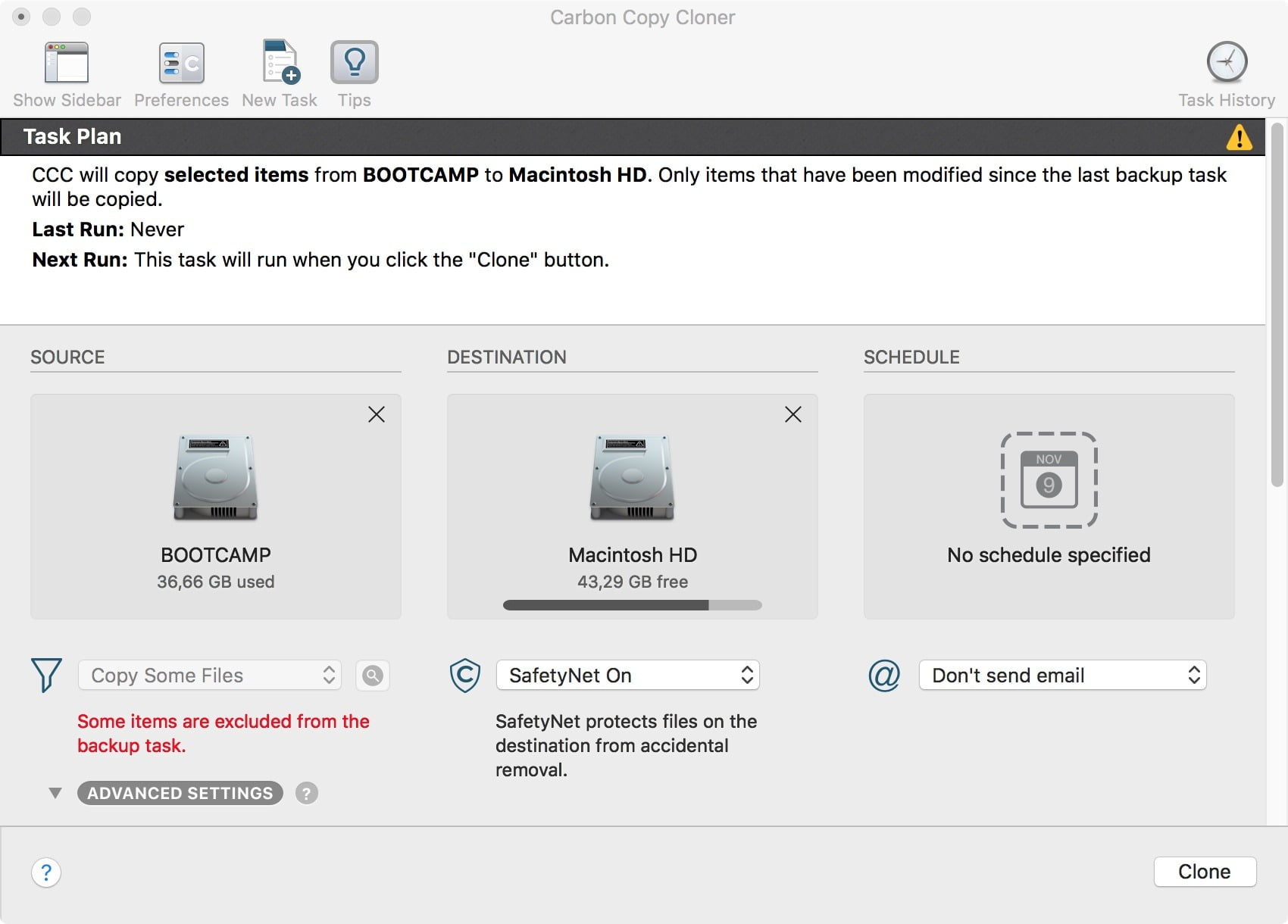

- Carbon copy cloner bootable backup monterey mac os#
- Carbon copy cloner bootable backup monterey update#
- Carbon copy cloner bootable backup monterey upgrade#

Keeping multiple backups is always a good idea and Time Machine and Carbon Copy Cloner will work to save your data in different ways, depending on the crisis/scenario. Q: Should I run both Carbon Copy Cloner and Time Machine backups?Ī: Yes.
Carbon copy cloner bootable backup monterey mac os#
If you’re running a version of Mac OS before Catalina, Carbon Copy Cloner 5 still works fine. Note: Carbon Copy Cloner 6’s user interface is a bit different and may take some getting used to. Here’s a list of some of the new features:
Carbon copy cloner bootable backup monterey upgrade#
CCC6 is significantly faster and the upgrade price is only $20. Q: Should I upgrade to Carbon Copy Cloner 6?Ī: If you’re running Mac OS Catalina, Big Sur, Monterey or later I recommend updating to Carbon Copy Cloner 6. SSDs are becoming much more affordable per Gigabyte, are exponentially faster than spinning hard drives, and are more resilient to bumps and bruises due to them having no motor or moving parts to wear out.Īs of this writing (October, 2021), a name-brand 1TB SSD can be had for around $155 and a 2TB model for ~$300. <60 seconds to boot from a backup made to a solid state drive (SSD). In an emergency it may take 8-10 minutes to boot from a spinning APFS drive (vs. The performance of a spinning hard drive formatted as APFS is terrible. Q: Can I continue to use my old external spinning hard drive for Carbon Copy Cloner bootable backups of Catalina, Big Sur or Monterey?Ī: I don’t recommend this. Note: This will permanently destroy all previous backup data on the drive. If you have an older backup drive which was previously set up for an earlier operating system (“Mac OS Extended, Journaled”, a.k.a “HFS +”, it is will likely need to be erased and reformatted as APFS. Q: What do I need to know about backups in Catalin, Big Sur or Monterey?Ī: Disks used to boot a Mac are now required to be formatted in Apple’s newer file system (APFS). For Intel-intel based Macs, I still recommend the “Legacy Bootable Backup”. If you’re running an Apple silicon “M1” Mac, I recommend using Carbon Copy Cloner’s “Standard” data-only backup strategy. Apple “M1” processor), and if you want to preserve previous “Snapshots” (points in time from which you can restore data). Today things are a bit more complicated… Start with this article by Carbon Copy Cloner’s programmer Mike Bombich:Īs noted in this article, the answer depends on several factors, including which Mac hardware you have (Intel processor vs. Prior to Catalina, the answer was “absolutely”. Q: Should I make my Carbon Copy Cloner backups “bootable”?Ī: This is a tricky question to answer.
Carbon copy cloner bootable backup monterey update#
A backup to an external drive is the best way to recover from a sick drive mechanism, failed operating system update or lost/stolen computer. Q: Should I continue to use Carbon Copy Cloner to make backups of my data?Ī: Absolutely. And Carbon Copy Cloner is just as good too.For those who have bought a new computer or have updated their machine to Apple’s Catalina, Big Sur or Monterey operating systems, here are some things to know about the new(ish) APFS disk format, bootable backups and the Carbon Copy Cloner backup program… That said, I do use SuperDuper often to create a secondary backup of my drives. So I'm not sure what your reason for wanting a bootable backup is, but I don't find them useful at all. It would be painful to work for any period of time. You'd boot from USB and then what? You'd be running a system crippled by the fact that your OS, applications and documents were on an external USB drive. So you can't be up and running immediately.īut if you have a bootable backup on USB, then you only have a temporary solution anyway. The difference is that you restore from a Time Machine backup. On the other hand, a Time Machine backup gets you everything you did from 0-59 minutes ago. So if that was three days ago, then you lose three days of work. Your bootable drive will only have what you were doing up to the time of your last backup to it. Not so handy if you are a creative individual who makes content or produces something. Handy if you are an air traffic controller or some other job where you have to get up and running immediately.

Usually the idea is that if your hard drive breaks, you can boot from a bootable backup and get to work right away. Basically it should always work from Firewire, but USB there are exceptions and some issues.īut consider why you are making a bootable backup. But using the drive to boot your Mac is a little trickier. You can create a bootable backup drive with USB or Firewire.


 0 kommentar(er)
0 kommentar(er)
